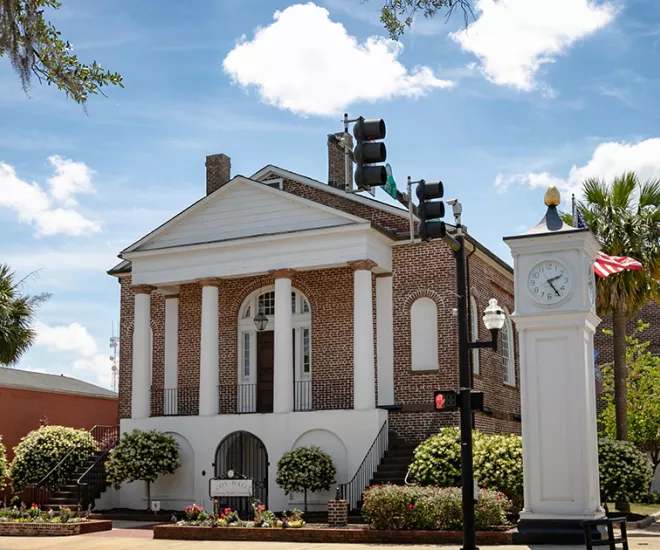A History Buff’s Guide to Conway, SC

Exploring all that there is to see and do on the Grand Strand is one thing, but going back in time to discover the history rooted in our area adds another layer of charm.
There is so much history to dig up like buried treasure, that we’re going to guide you through a lesson in a timeline of events, town by town, starting with Conway just across the Waccamaw River.

1732
Before being named Conway, it is originally called Kingston, and the site of the town is marked out and planned out on a bluff overlooking the Waccamaw, with the first English settlers beginning to arrive by 1735. Many of these settlers would go on to fight in the Revolutionary War near Kingston at Bear Bluff on the Waccamaw. General Frances Marion, known as the “Swamp Fox,” had relatives in this area, and his troops were known to camp in Kingston on his way back to the battle of Black Mingo.
1769
Located in the Parish of Prince George, Winyah, Kingston is situated on land that is now Horry County, which becomes part of the newly created Georgetown Judicial District
1770s
While more than 8 out of 10 Kingston residents at this time are English, the English-Americans of the town were very sympathetic to rebels in Charleston over the taxation without representation issue.
1801
In honor of General Peter Horry (pronounced oh-ree), the name for the colony is changed to Horry District, and a courthouse is built. The name of the Kingston village is changed to Conwayborough, after General Robert Conway of the South Carolina State Militia.
1832
According to records from the state, Conwayborough’s population slowly grew to 200 this year, up from the town’s population of 100 in its founding date of 1801.
1860
The Waccamaw River thrives in Conwayborough as the main transportation thoroughfare for passengers and goods to Georgetown. Plantation owners planted along the river banks, and forests reigned over the rest of the land. Turpentine and lumber naval stores were an important industry at this time as well. Also of importance: Thomas Beaty and Benjamin Sessions of Conwayborough signed the Ordinance of Secession from the Union in Charleston.
1883
The South Carolina General Assembly shortens the town name to Conway.
1887
The Carolina Southern Railroad reaches Conway and, in 1898, the town incorporates and elects its first mayor.
Early 1900s
In the wake of a destructive fire, downtown Conway (and much of what you see today) is rebuilt in the early 1900s under a shroud of old live oaks. Many of the river town’s buildings and structures, in fact, are on the National Register of Historic Places, including the City Hall on Main Street, designed by Robert Mills, the same architect who designed the Washington Monument.
1980s
Conway’s Main Street USA Project revitalizes the historic downtown’s shops, bistros, theatre, and Riverwalk.

To further explore the history of Conway and Horry County, it’s worth a visit to Horry County Museum and L.W. Paul Living History Farm in Conway (free admission).
